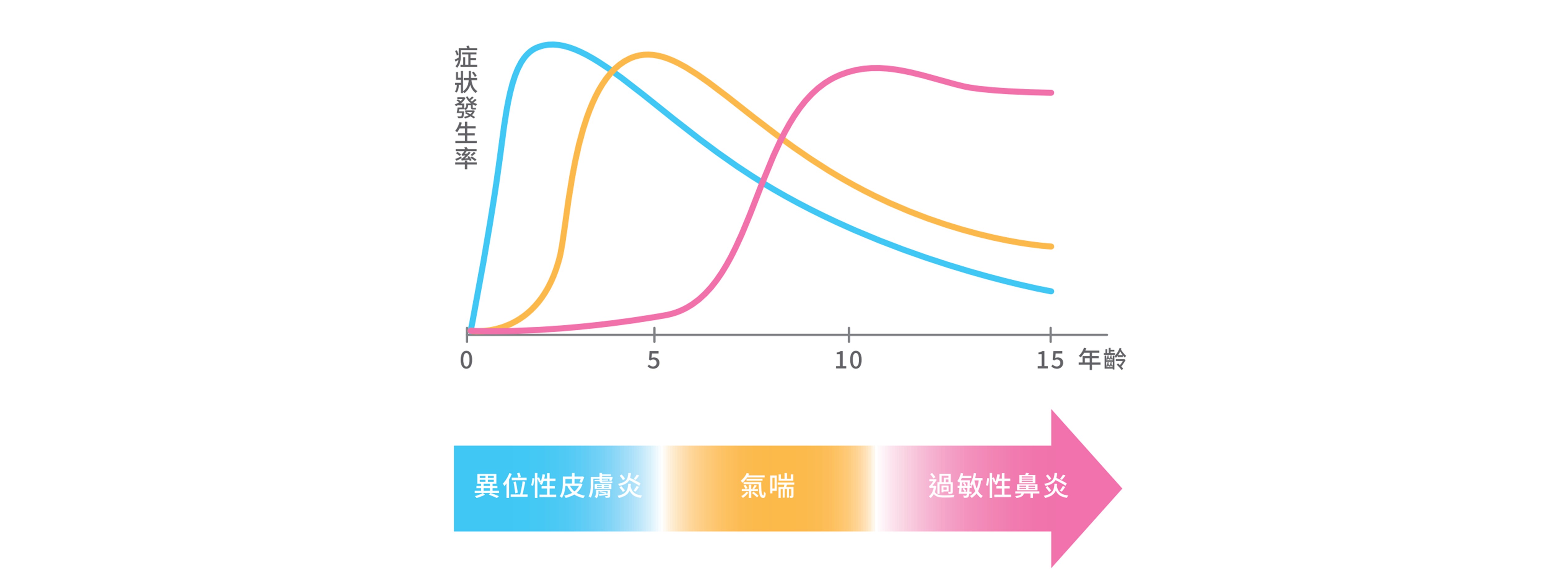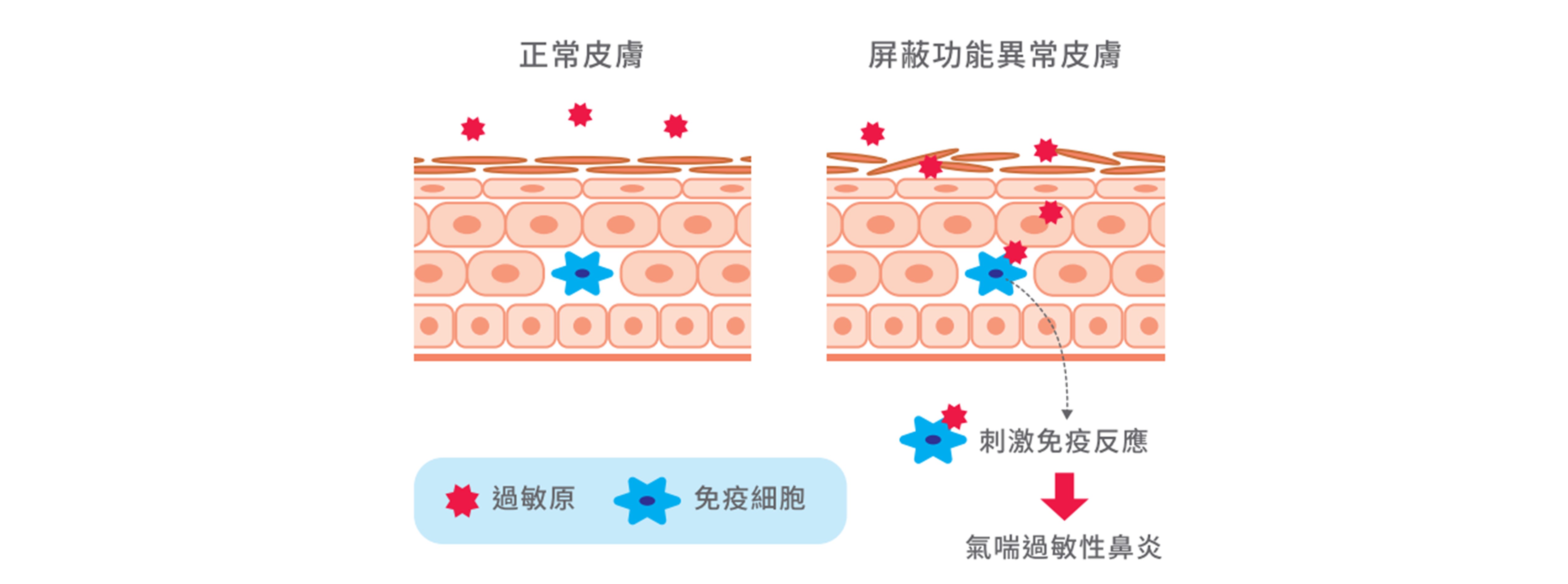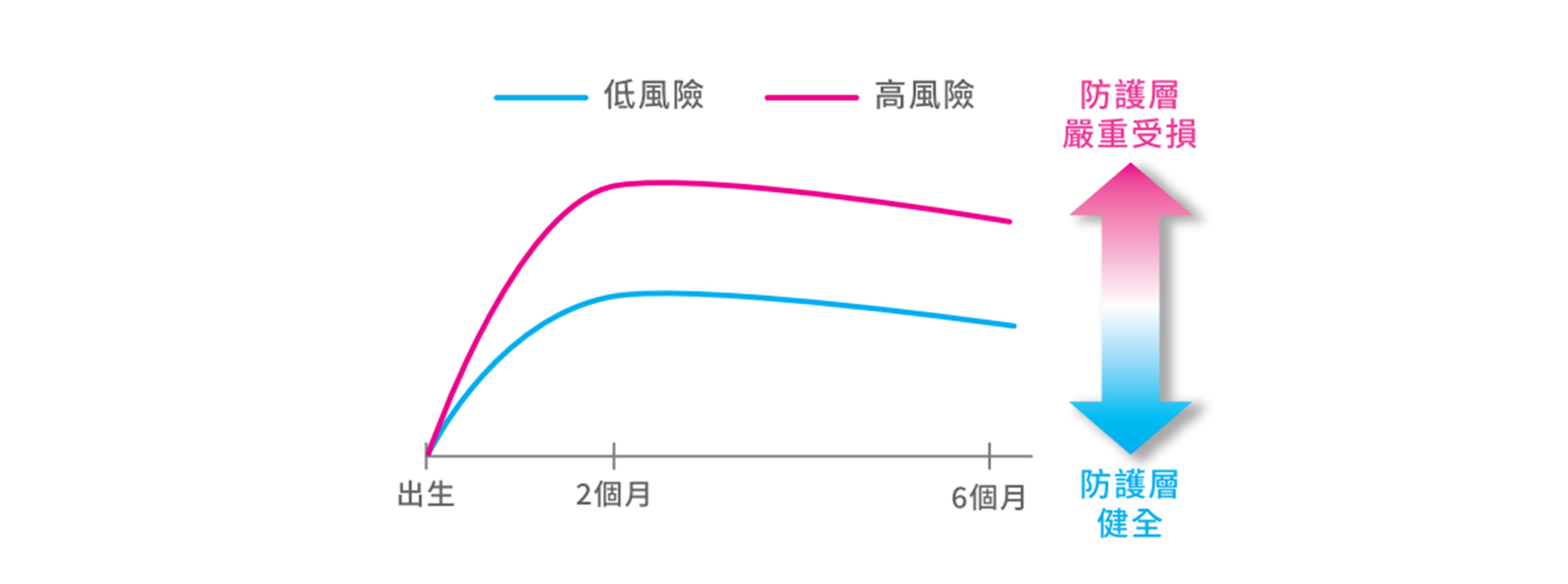異位性皮膚炎過敏基因檢測-FLG基因 (AD)
服務介紹
■ 過敏三部曲
隨著年紀增加,過敏體質的表現方式也會跟著改變,而且症狀越來越嚴重。看起來不相干的鼻炎和皮膚炎,實際上只是不同部位的過敏反應。為防堵氣喘發作可能性,就要在出生時做好異位性皮膚炎過敏預防準備。

■ 皮膚的防護功能與異位性皮膚炎的關聯
皮膚是人體最大的器官,肩負著保護人體不受外界環境和病原菌刺激的重大責任。當皮膚屏蔽功能出了問題,抵禦能力降低就有機會讓外界過敏原長驅直入,誘發體內免疫發炎反應爆發。此外皮膚中的水分也會透過受損的表皮不斷流失,引起乾燥發癢,而抓癢造成的皮膚傷害又會再次刺激免疫細胞造成發炎,甚至導致細菌感染,形成惡性循環。
■ 基因與異位性皮膚炎的早期發現
多數異位性皮膚炎患者於2到3個月大時就開始發病,兩頰變得乾燥、發紅、脫皮,而且奇癢無比,寶寶時常因為不舒服而顯得躁動不安,不易入睡。雖然異位性皮膚炎並不屬於單一基因調控的疾病,但目前研究已發現數個重要的遺傳影響因子,帶有這些危險因子的高風險寶寶在出生時和一般寶寶的皮膚鎖水保濕率差不多,但兩個月大時就可看到顯著差異,失水比例增加,皮膚也明顯更為乾燥,表示皮膚防護層已開始出現受損狀況。
■ 早期檢測與預防措施
雖然基因的結果無法改變,但目前研究發現,如果可以及早得知寶寶是否為高危險族群,在發病之前使用高效力的保濕乳液提高皮膚屏蔽力,保持水份不散失,並搭配適當防蟎抗菌寢具、衣物、空氣清淨機等,讓入侵過敏原的數量大幅降低,可以有效減少異位性皮膚炎發病機率30%以上,也讓寶寶更加遠離從皮膚症狀轉變成鼻炎、氣喘的過敏三部曲行列。
檢測說明
從過去的文獻資料中發現有數個基因和異位性皮膚炎有高度相關性,其中20個高風險點位在台灣人中非常常見。
此檢測利用簡單的口腔黏膜採集DNA分析是否為高、中、低風險過敏體質,並可根據此資料給予後續的評估和衛教資訊。
適用對象

✔ 懷疑自己有過敏性體質,且擔心會遺傳給寶寶的父母
檢測流程
步驟一:在專業的諮詢人員講解下,更進一步了解異位性皮膚炎過敏基因檢測,並完整填寫同意書
步驟二:利用特殊的口刷棒採集口腔黏膜檢體,並將採集好的口刷棒運送至慧智進行檢測
步驟三: 三星期後寄送檢測報告至院所,並由專業醫師解說報告結果



